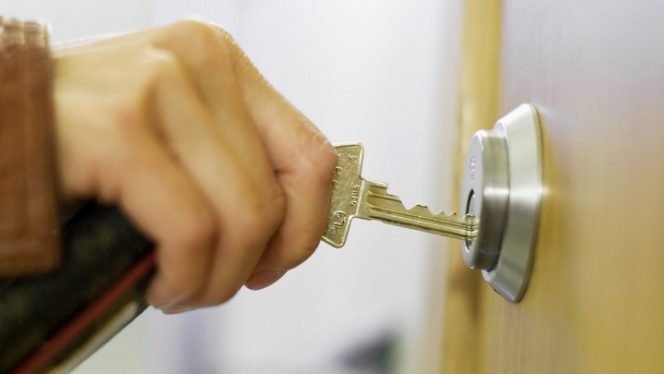If the lock has blocked and the key has got stuck or has broken inside, read the previous article as it might be your situation. If, on the other hand, it is another problem and corresponds to one of those mentioned below, then you are reading the right blog. As promised, we are proposing solutions here for the three cases which had remained pending from last time:
- A key has remained inserted inside
- The cylinder is damaged
- The cylinder has rusted
If you have left a key inserted inside

Unfortunately, in this case, unless there is a person inside who can remove the inserted key, you will have to resort to a professional locksmith. At the end of the operation by the expert it is probable that the lock will need changing and a new one will have to be purchased, as it will no longer be able to fulfil its security duty. To avoid unpleasant situations like this from repeating themselves, we suggest that cylinders be purchased with an emergency function (like the Viro cylinders of the 700 series) or frictioned cylinders (like the Viro Palladium) which allow the opening from the outside even if a key has been inserted inside. For those interested in this product, we talked about it in the blog “I closed the door with the key inserted from the inside. And now how do I get back in?”.
If the cylinder is damaged

The cylinder may have been forced during a break-in attempt or it could simply be old and, with time and wear, it may have undergone alterations to the structure which no longer allow it to open. You may also have arrived at this point if you have entered the wrong key in the cylinder, convinced it was the right one. Unfortunately, in these cases there is not much advice, apart from the classic “Ask an expert”, as it is likely that in order to open the door it is necessary to drill or break the cylinder.
If the cylinder has collected dust and rust inside

If the key is stuck, no longer turns or you cannot even insert it, be warned that oil is not the solution: in fact, oil-based lubricants, even if they could initially solve the problem, tend to retain the dirt already present inside the cylinder mechanism and also attract new dirt later. In these cases, the best option is graphite powder-based lubricant. The aim is to be able to distribute it everywhere, on the key and inside the cylinder. Alternatively, there are specific solutions which have been specially designed for “descaling” and removing dirt. These are synthetic-based spray lubricants with anti-wear and anti-friction properties. Most of the time, these sprays, equipped with spouts, allow the product to spread evenly over the surface.
We have reached the end of the article and we hope that, in the unfortunate event that you are in one of the situations described above, you can find a solution to unblock your lock and that you can go back to using it as before. If not, it is perhaps time to call an expert, but if you know of other valid solutions, feel free to comment.

Thanks for mentioning that lock might not be function properly as a result of the cylinder aging over time. I have recently inherited my late-aunts house, but I haven’t been able to unlock the back door even though I am using the right key. It might be a good idea to find a locksmith who can tell me if the cylinder has become worn out.
My uncle noticed that he’s having a hard time opening and closing his doors for some reason. I had no idea that his door locks could accumulate rust, which makes it hard for them to do their function. I should recommend that he look for a lock repair expert that can take care of this for him.